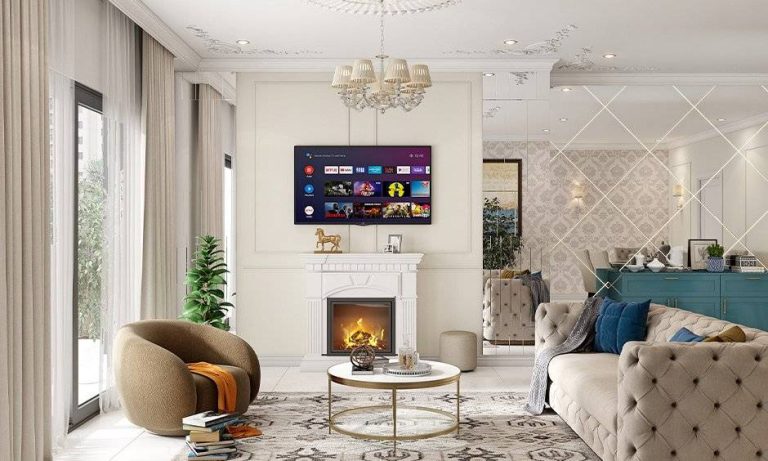You never really think about fireplaces until you start looking at houses.
One minute you’re scrolling through listings, judging people for their wallpaper choices. The next, you’re zeroing in on hearths like a Victorian chimney sweep turned property expert.
The funny thing is, people care more than they admit. A fireplace makes them feel like the place has character. Even if it’s never been lit. Even if it’s got one of those awful electric inserts that look like a 90s screensaver.
But if you’re the one selling, the question flips. What type of fireplace makes buyers pause and say, “Ooh, this one feels right”?
Let’s be honest. Most people don’t buy a house for the fireplace. But they do use it to judge the rest of the room. It’s a centrepiece. A clue. A sign you’ve taken care with the details.
So yes—it matters.
And some fireplaces absolutely work harder than others.
Wood Burners: For Buyers Who Romanticise Winter
There’s something about a wood burner that makes people think they’re about to start baking sourdough and wearing cable knit jumpers.
It’s the country dream. Even if you’re five minutes from the ring road.
A well-fitted wood burner—especially one with a proper hearth and no fake bricks—can make a room feel warm even when it’s cold.
Estate agents love them. They mention them in listings like they’re talking about double garages or wine cellars. “Cosy sitting room with wood-burning stove,” they’ll write, as if the buyer will suddenly picture themselves reading books instead of watching telly.
But be warned: it has to look like it belongs.
Put a log burner in a flat with no chimney, no garden, and no room for log storage, and you’ll confuse people. The dream falls apart.
Buyers will see it as a project. Something they’ll have to sort out. And most of them don’t want to do that.
Traditional Fireplaces: For Homes with History
If you live in a Victorian terrace or a Georgian townhouse, ripping out the fireplace is like taking the eyebrows off a face. Things start to look wrong. Flat. Slightly haunted.
Restored original fireplaces can add value—not just because they look good, but because they save buyers the job of putting one back in.
Even replicas work, if they’re done well. Cast iron inserts. Marble surrounds. Anything that looks like it wasn’t bought during a bank holiday sale.
Period homes sell better when the features match the age. A well-proportioned fireplace can tip the balance for someone sitting on the fence.
Just don’t pair it with spotlights and a flatscreen the size of a wardrobe. It’ll throw everything off.
Gas Fires: Clean, Quick, and Often Overlooked
Gas fireplaces are the middle child of the heating world. Not flashy. Not messy. Just there, doing their job.
They don’t always wow buyers. But they rarely put anyone off either.
If yours is modern, neat, and works well, it’s a tick in the box. Something safe. Something practical.
If it looks like it belongs in a hotel lobby from 1997, maybe think about updating it before the photos go online.
Buyers might not say it aloud, but they will mentally deduct money if they think they’ll have to replace things straightaway.
Electric Fires: A Bit of a Gamble
These days, many electric fireplaces are realistic. You switch them on, and they flicker convincingly. They fill a gap, give a bit of warmth, and stop the room from feeling bare.
But others are an insult to good taste.
If it’s made of shiny plastic, or changes colour like a disco, or has fake pebbles glued to the front—rip it out. You’re not selling a nightclub.
Electric fires are fine in new builds or places where a proper fire isn’t possible. Just don’t expect buyers to get excited about them.
If anything, they’re neutral. They won’t add value. But if they’re awful, they’ll take some away.
What Adds Real Value?
Here’s the honest bit.
A fireplace won’t turn a bad house into a good one. But it can turn a plain room into something memorable.
The ones that add value usually share these things:
- They fit the room. Not too big. Not too small.
- They match the house. Modern fire in a period home? Maybe. But only if it’s done with some thought.
- They work. No one wants a “decorative feature” that needs a £2,000 repair.
- They look good in photos. This matters more than you think.
You’re not just selling bricks and mortar. You’re selling an idea. A feeling. A space where someone can imagine Christmas, or rainy days, or having a quiet moment with a mug of tea.
A good fireplace helps with that. A bad one just makes people feel awkward.
So What Should You Do?
If you’re staying in the house, choose the fire you’ll enjoy.
But if you’re thinking of selling, or renting, or just not ruining the living room—go with something that suits the space.
Simple. Clean. Works well.
That’s it.
And if you’re stuck? Come see us. We’ve got fires that don’t shout, don’t clash, and don’t need a user manual. Just the sort that help people picture themselves living in your home.
And that’s where the value really comes from.


Comments are closed.